Themes of Love and War
Motion Graphics
// Brief
For this project, as a group, we were tasked with designing a narrative driven animation for the clients we had previously worked closely with – Wessex Museums. The idea was to base our narrative off the themes of love and war and use Hardy’s book, The Trumpet Major, as inspiration for our design. This animation would be used for one location of the four that is hosting the travelling exhibition of “Hardy’s Wessex: The Landscapes that Inspired a writer”, of which we previously did the branding for.
Technically, we would have to come up with a storyline/narrative to follow, an art style and decide whether we’d want to do the animation entirely digitally, incorporate mixed media or hand craft and film the entire thing. The animation would need to last at least 45 seconds and appeal to all audiences throughout the museum’s demographic to help people of all ages and Hardy fanatics to understand the themes and meanings within his work.
My Team: Harriet Lee, Olivia Allan and Dan Smart.
// Research
Initially, I started diving into some of the poems and stories written by Hardy that expressed themes of marriage, love, war, death and travelling. Some of the key texts that I discovered were: ‘Drummer Hodge’, ‘Budmouth Deers’, ‘Boney’, ‘The Old Rooms’ and ‘Great Things’ to name a few. These stories, poems and songs were also expressed to us by the great mind of Tim Laycock, who performed and sang some of them in the way they would’ve at the relevant time, which greatly helped us vision a feel and background of these emotions, themes, and narratives.
When researching about The Trumpet Major, we noted the constant change in love interests and felt this was a great starting point to develop a narrative from. Visually we thought it would be in our interests to look what colour palettes were common at the time and have a basic understanding of an art style when we started designing some initial storyboards.
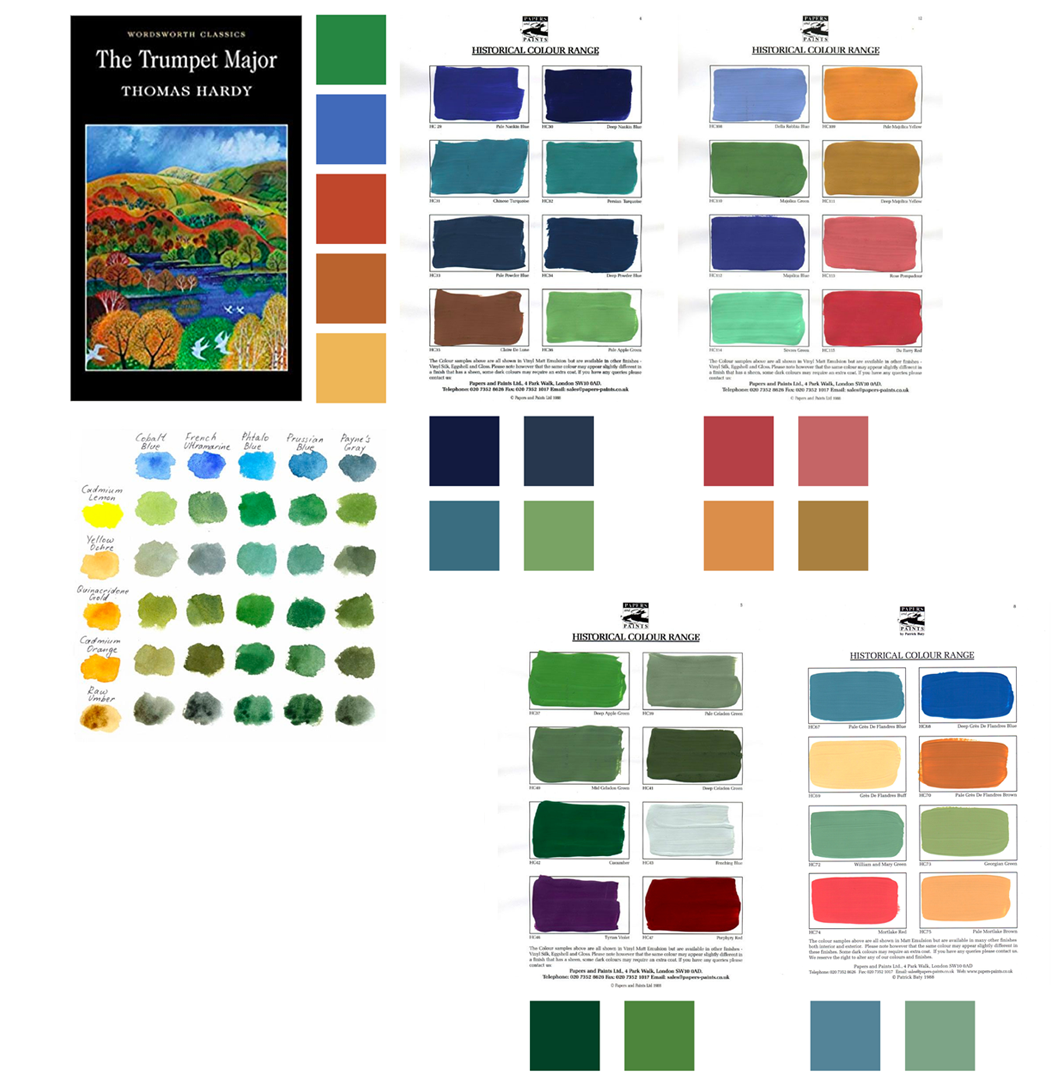
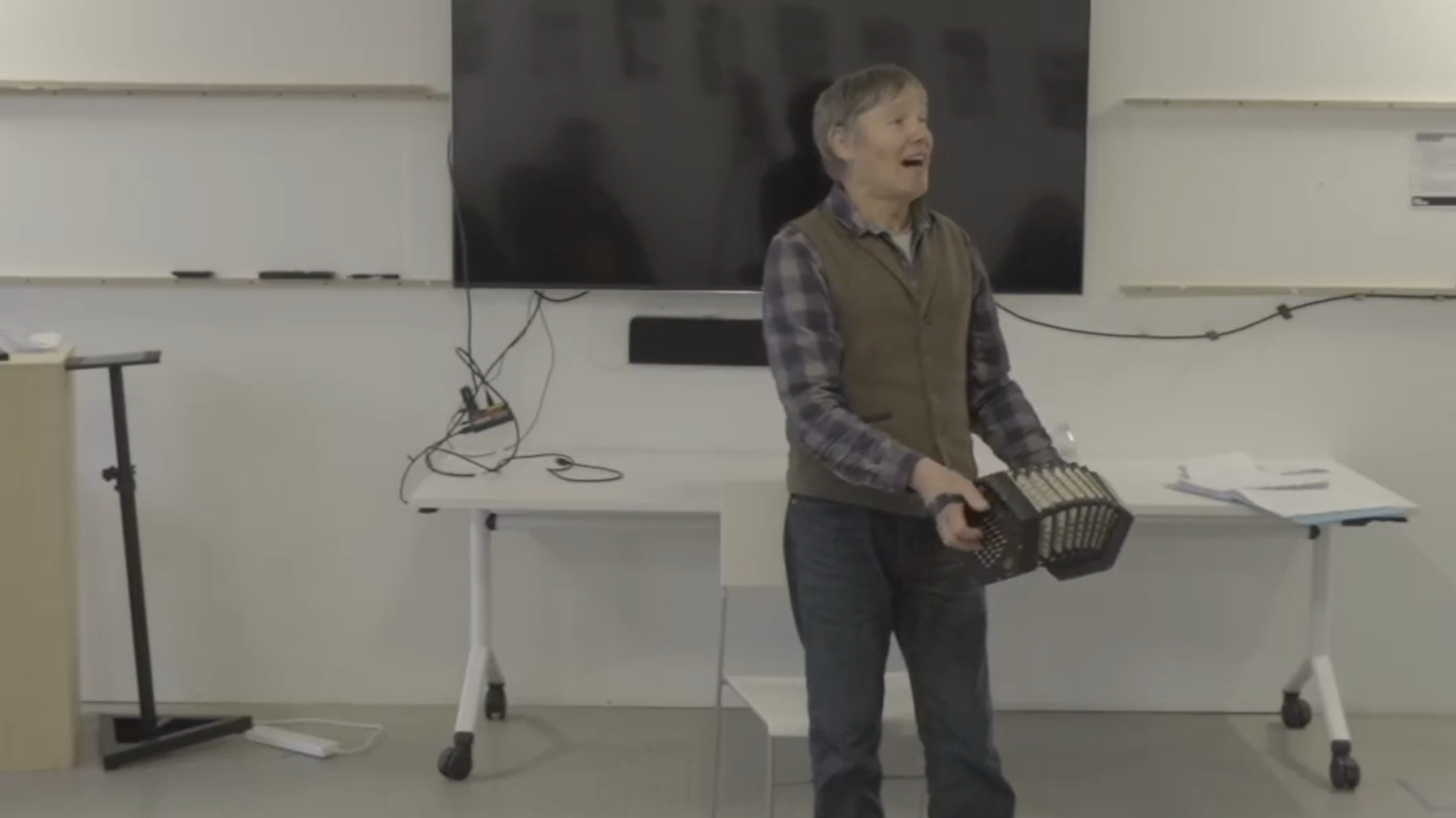
// Process
Individual Ideas: The start of the designing phase was an individual process, coming up with unique storyboards and narratives to then compare and analyse between one another. I took The Trumpet Major and Drummer Hodge as my initial narrative inspiration and created a couple of storyboards based on them respectively. Accompanying these drawings, were digitalised animatics I created to help visualise the camera angles and movement along with the animated features withing the composition.
Chosen Idea: As a group we decided to go with a narrative which was a combination of Harriet’s and Dan’s and a blended art style of line drawings and watercolours. The second storyboard we constructed was a final story of our animation that depicted Anne and her lovers, one by one, coming and going, throughout her life represented by a recuring line that would be drawing out each character and scene in frame.
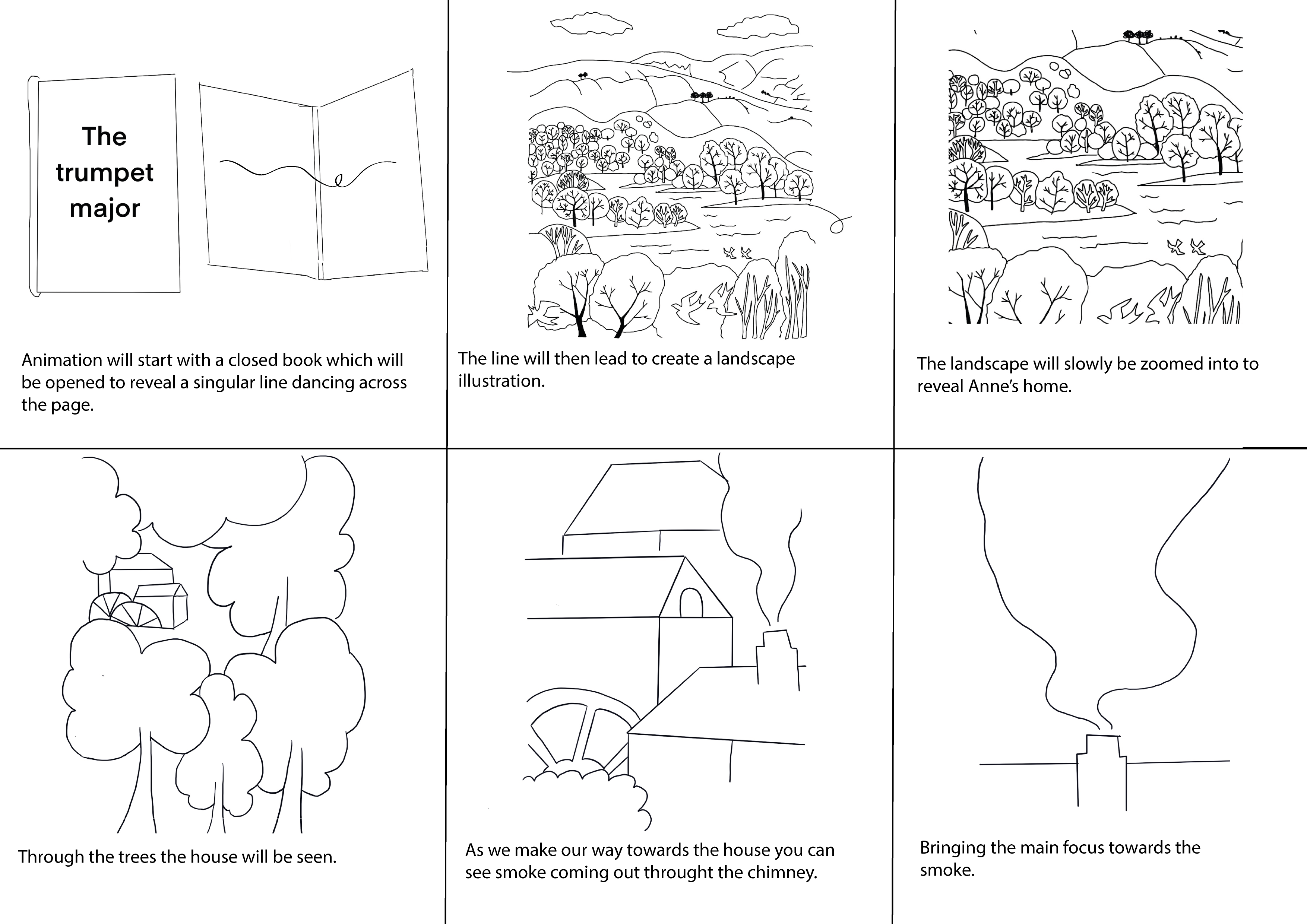
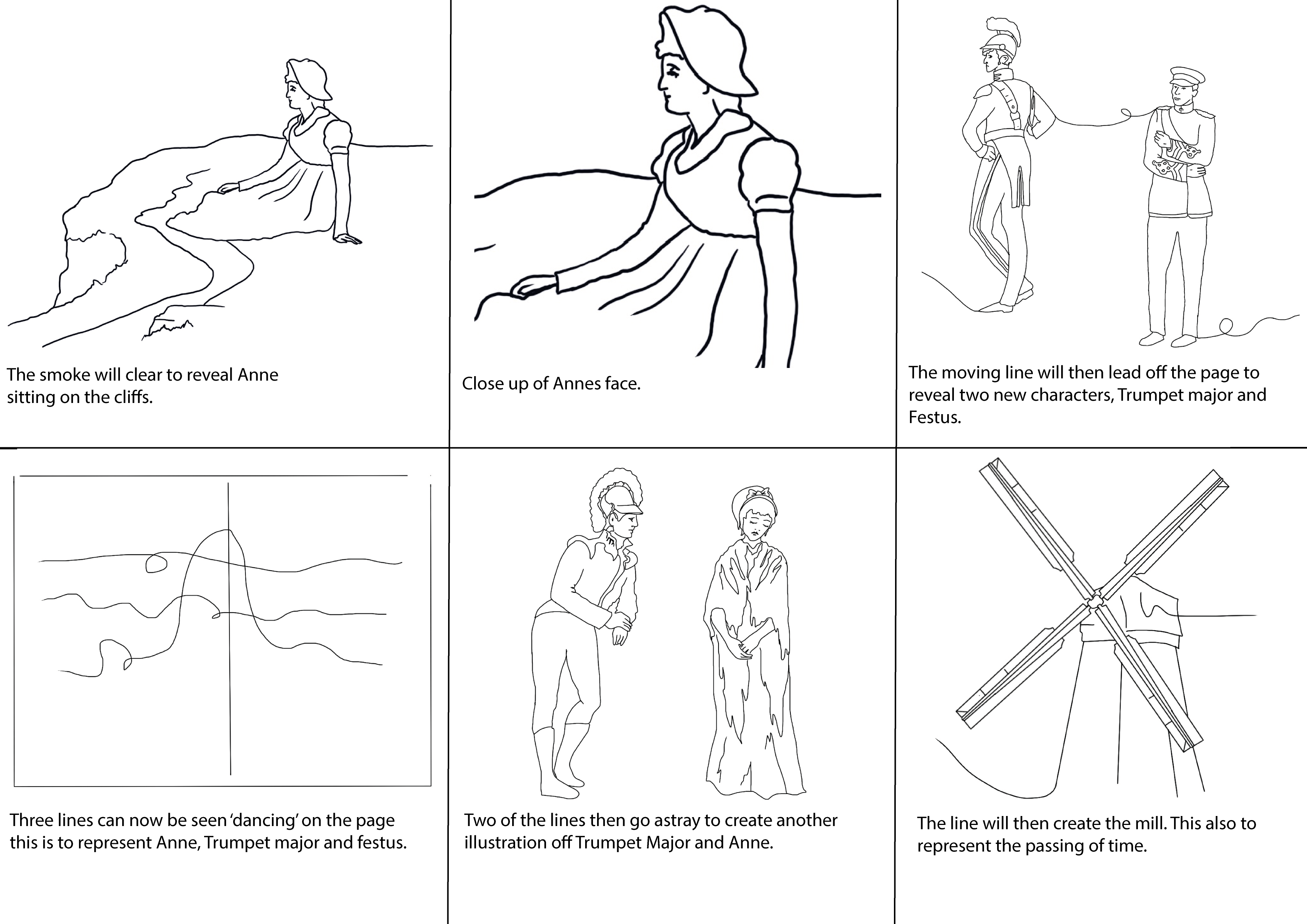
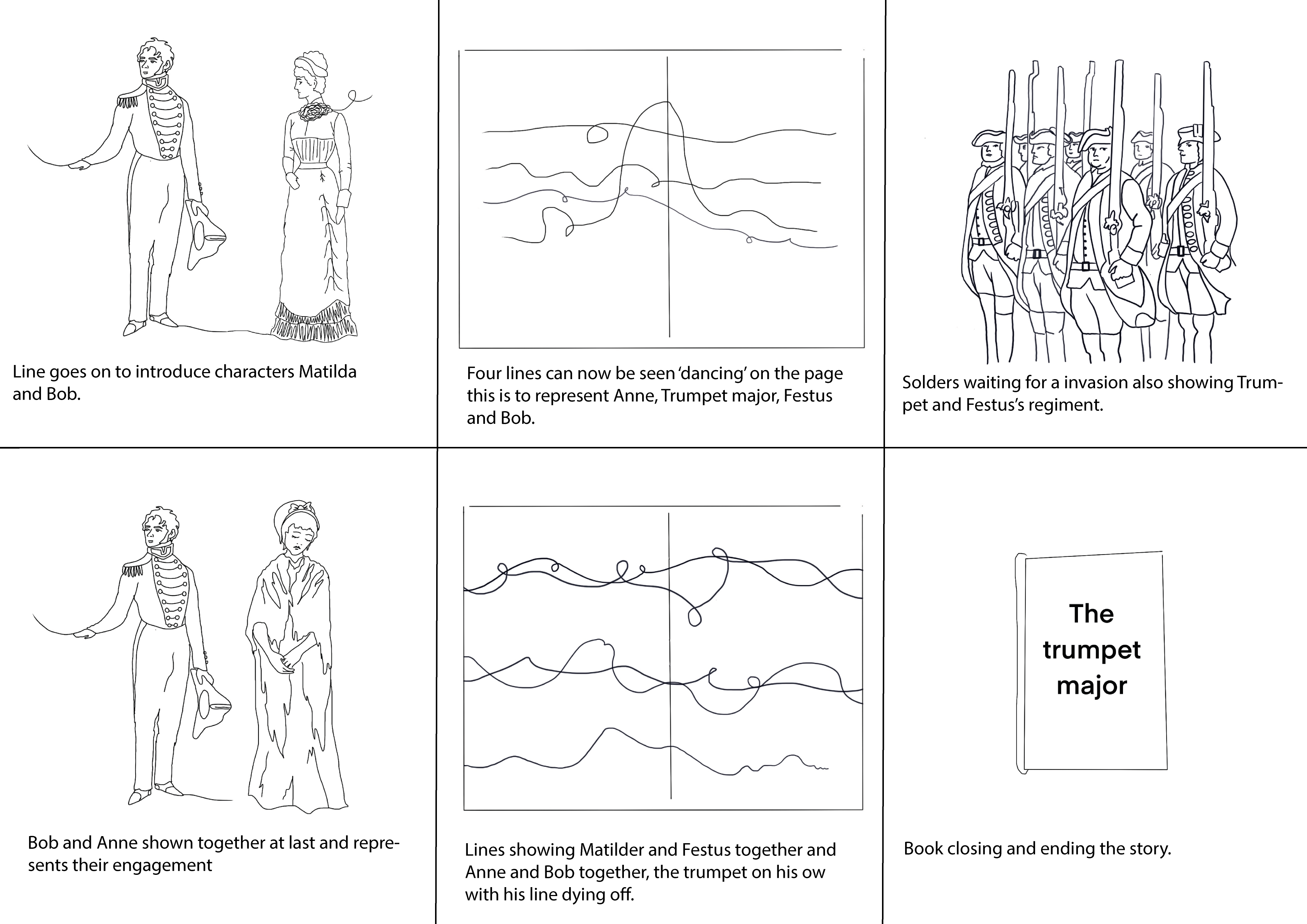
Technical Tests: Due to our great mix of skills within the group, Harriet and Olivia would draw each character in the single line drawing style, I would animate it and Dan would create the sonic composure. This led to Harriet and Olivia instantly developing characters and landscapes whilst I attempted some technical test to help us visualise what the outcome would look like. I came up with a short clip that showed how each image would be drawn on screen and a short clip to show what the transitional period of the animation would look like, with the line joining with another line and shooting off in different directions.
Sound: As visuals are only 50% of an animation, we needed the sound to fit into the style, era, and themes of our narrative. This was when we started to think what we wanted in our animation sonically, and after undergoing an audio workshop, we felt ambient nondiegetic sound would help bring the visuals to life along with a peaceful ambient soundtrack without vocals to distract from the narrative. We found some of the sounds we created in the workshop to fit with the visual of our animation, such as pages turning and animal noises for the landscape scene. Along wit this, we did some investigating into soundtracks we could use for commercial use and came across this vocal-less song which was harmonic and dramatic and fit well along side our visual language.
Final Animatic: After some technical tests and some visual exploration, we wanted to create a final animatic based off our final storyboard to further visualise and consolidate the visual language and narrative. This consisted of me taking the frame by frame of the storyboard and extracting elements we felt would move or pan around. This applied to character and environment movement along with camera motion. We also used some sounds we collected from the workshop, a harmonic soundtrack and a voiceover of a poem spoken by Dan.
Adjustments: After conferring with graphic designer Tim Varlow and our own group we decided to cut the idea of colour in our animation, this is due to the line drawing art style being a standout effect on a page and the colour would be too distracting and clash with the narrative we wanted to portray. We also used this point in our project to come up with some unique ideas to help develop our idea further, and decided we wanted to introduce a physical aspect to our animation and not keep it entirely digital. This was going to come into play with the opening and closing scene of our animation where the book concept would be filmed in real life and the drawings would be edited into the book. This should give our design a more human feel and less digitalised.
Final Composition: Once all the basics were finalised, I was tasked with compiling all the digitalised drawings and animating them in sequence and layering the effects and transitions to them. The drawing visual style was achieved by utilising ‘trim paths’ in After Effects and then added a turbulence displace effect on top of the trim path to give it a jittery, hand-drawn feel. Then I went to the beginning and end of our animation to add on the cover our title and mask the hand around it. Then it was a matter of adding ambient animations to the landscaping scenes like clouds, wind and flowers to give more motion to the design. Post-animating, I took the visuals to Premiere Pro to add the audio layers, where I lined up the opening of the song to the opening of our animation and faded the sounds around it.
// Outcome
Overall, the entire process was very rewarding as we had 4 weeks to conceptualise, experiment and create an animation based on the themes in the works of Thomas Hardy. The overall process wasn’t too hard due to my comfort in After Effects, Premiere Pro and Illustrator, which made the animating less complicated, but it really expanded my knowledge on different parts of After Effects like the 3D camera elements and parallaxing effect.
As an added bonus to the project, our design was picked to be displayed within Poole Museum to represent these themes in the travelling Hardy's Wessex exhbition.
To watch the full animation in all its glory, click here!
// Evaluation
Over this project, I have been exposed to a new way of thinking and developing ideas, from which, I have learnt that I really enjoy creating motion graphics. Utilising Adobe Illustrator, which I was already comfortable with, to create the foundation of the movement was a unique way of formulating motion and animation and allowed us to create a style that I had not seen before. When transferring our initial designs from Illustrator to After Effects, there was a bundle of issues relating to strokes and fill settings. These hurdles were overcome by testing and experimenting with settings throughout both software's due to the issues being oddly specific and the fact we had not used After Effects as extensively as we had Illustrator, however I was comfortable with the basics, common key binds, keyframing and using the graphs for keyframes too.
The narrative aspect of the project was a new concept, due to the only experience I had with creating a narrative was creating a short 30 second gif/video on fast fashion. Basing the fundamentals and themes of the narrative from “The Trumpet Major” was a useful starting point to help establish the initial visual signifiers of themes of love and war within our story. My initial idea for the narrative was a visualisation of The Trumpet Major, however we felt that the narrative of this animation would be too literal, and such wanted our design to follow a more conceptual and implied visual language to demonstrate themes of love and war. Understanding this, we then adapted the narrative to highlight the key love interests and the key battle and soldier points throughout the novel. These key signifiers plus using line drawings as our art style, allowed us to keep motion flowing through the screen, drawing on these symbols of the novel and at the same time the drawings are being undrawn to further embed the ideas of love and loss.
To help our narrative flow, we overlaid our visuals with a spoken poem by Hardy which spoke of a man describing his wife and then pondering when he would next see her. To finalise the sonic layer of our animation, we used a peaceful music track with no vocals that was used to create a sense of ambience and to fill in the transitional fazes throughout the animation.
The audio and visuals, I feel, harmonies well with each other, can be accessible to any form of audience due to the simple style and truly represent themes of love and war throughout the works of Thomas Hardy.